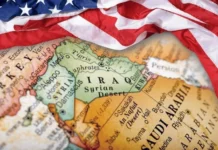Good Afternoon,
India Confirms BRICS De-Dollarization Efforts Despite Trump’s Pressure
• India acknowledges that BRICS nations are actively exploring alternatives to the U.S. dollar for cross-border trade and settlement.
• Despite Trump’s 10% tariff threats, discussions on local currency usage and interoperable BRICS payment systems continue.
• India walks a diplomatic tightrope—welcoming diversified monetary systems while rejecting a BRICS common currency.
India Confirms Currency Shift Talks Underway
India has formally confirmed that BRICS nations are advancing talks on mutual trade settlements using local currencies and interoperable cross-border payment systems—initiatives seen by many as stepping stones toward de-dollarization. Officials say these discussions are progressing despite strong opposition and tariff threats from the United States under President Trump.
At a recent press briefing, Ministry of External Affairs spokesperson Randhir Jaiswal explained:
“We had a highly successful BRICS summit… In the joint statement, there are several aspects that have been fleshed out that strengthen the BRICS platform… Cross-border payments, yes, BRICS have talked about local currencies, but de-dollarisation is not something that is there on the agenda.”
This clarification shows India’s nuanced position: While it supports greater monetary autonomy for BRICS countries, it resists the idea of completely replacing the U.S. dollar or launching a common BRICS currency—at least for now.
Trump’s Threats Complicate BRICS Coordination
The Trump administration’s renewed tariff threats have escalated tensions within the BRICS alliance. President Trump recently warned of 10% tariffs on nations engaging in policies aimed at reducing dependence on the U.S. dollar. The comments came shortly after Russian President Vladimir Putin proposed the creation of a new BRICS investment platform—an initiative seen as a vehicle for financial independence.
Trump called such actions “anti-American”, and pledged steep economic penalties on countries adopting them.
India’s Strategic Position: Realism Over Revolution
India’s Foreign Minister S. Jaishankar offered a cautious counterpoint:
“India has never been for de-dollarization. Right now, there is no proposal to have a BRICS currency.”
While India has experimented with rupee-based trade settlements—particularly with sanctioned nations like Russia—the volatility of the rupee and its depreciation (from ₹73 to ₹85 per USD over the past five years) makes a larger move toward de-dollarization risky. India’s leadership is deeply aware that currency instability, Western capital dependencies, and technological reliance make total decoupling from the dollar unfeasible in the near term.
Moreover, policymakers are wary of rising Chinese influence within the BRICS framework—particularly via yuan-settled trade and the New Development Bank.
The Reality of Global Trade Flows
While the dollar still accounts for 54% of international trade, the landscape is shifting. Over 50 nations now conduct trade in yuan, rupees, and rubles, signaling a global trend toward currency diversification—even if the U.S. dollar remains dominant.
India’s approach aligns with gradual diversification, not a wholesale monetary revolution. Rather than pushing for a BRICS currency or direct confrontation with the dollar, Indian officials are opting for “practical collaboration”—focusing on bilateral and multilateral trade mechanisms that reduce visible dollar dependence while maintaining Western financial and technological ties.
Conclusion: India Balances Between East and West
India’s position within the BRICS de-dollarization dialogue reflects the complex geopolitics of the global economy. While aligned with BRICS in diversifying global finance, India remains strategically committed to economic pragmatism, carefully navigating between Trump-era tariff threats, Western capital inflows, and China’s growing influence.
India’s message is clear: It supports a more balanced global monetary system, but not at the cost of financial stability or strategic autonomy.
India Confirms BRICS De-Dollarization Efforts Despite Trump’s Pressure
• India acknowledges that BRICS nations are actively exploring alternatives to the U.S. dollar for cross-border trade and settlement.
• Despite Trump’s 10% tariff threats, discussions on local currency usage and interoperable BRICS payment systems continue.
• India walks a diplomatic tightrope—welcoming diversified monetary systems while rejecting a BRICS common currency.
India Confirms Currency Shift Talks Underway
India has formally confirmed that BRICS nations are advancing talks on mutual trade settlements using local currencies and interoperable cross-border payment systems—initiatives seen by many as stepping stones toward de-dollarization. Officials say these discussions are progressing despite strong opposition and tariff threats from the United States under President Trump.
At a recent press briefing, Ministry of External Affairs spokesperson Randhir Jaiswal explained:
“We had a highly successful BRICS summit… In the joint statement, there are several aspects that have been fleshed out that strengthen the BRICS platform… Cross-border payments, yes, BRICS have talked about local currencies, but de-dollarisation is not something that is there on the agenda.”
This clarification shows India’s nuanced position: While it supports greater monetary autonomy for BRICS countries, it resists the idea of completely replacing the U.S. dollar or launching a common BRICS currency—at least for now.
Trump’s Threats Complicate BRICS Coordination
The Trump administration’s renewed tariff threats have escalated tensions within the BRICS alliance. President Trump recently warned of 10% tariffs on nations engaging in policies aimed at reducing dependence on the U.S. dollar.
The comments came shortly after Russian President Vladimir Putin proposed the creation of a new BRICS investment platform—an initiative seen as a vehicle for financial independence.
Trump called such actions “anti-American”, and pledged steep economic penalties on countries adopting them.
India’s Strategic Position: Realism Over Revolution
India’s Foreign Minister S. Jaishankar offered a cautious counterpoint:
“India has never been for de-dollarization. Right now, there is no proposal to have a BRICS currency.”
While India has experimented with rupee-based trade settlements—particularly with sanctioned nations like Russia—the volatility of the rupee and its depreciation (from ₹73 to ₹85 per USD over the past five years) makes a larger move toward de-dollarization risky. India’s leadership is deeply aware that currency instability, Western capital dependencies, and technological reliance make total decoupling from the dollar unfeasible in the near term.
Moreover, policymakers are wary of rising Chinese influence within the BRICS framework—particularly via yuan-settled trade and the New Development Bank.
The Reality of Global Trade Flows
While the dollar still accounts for 54% of international trade, the landscape is shifting. Over 50 nations now conduct trade in yuan, rupees, and rubles, signaling a global trend toward currency diversification—even if the U.S. dollar remains dominant.
India’s approach aligns with gradual diversification, not a wholesale monetary revolution. Rather than pushing for a BRICS currency or direct confrontation with the dollar, Indian officials are opting for “practical collaboration”—focusing on bilateral and multilateral trade mechanisms that reduce visible dollar dependence while maintaining Western financial and technological ties.
Conclusion: India Balances Between East and West
India’s position within the BRICS de-dollarization dialogue reflects the complex geopolitics of the global economy. While aligned with BRICS in diversifying global finance, India remains strategically committed to economic pragmatism, carefully navigating between Trump-era tariff threats, Western capital inflows, and China’s growing influence.
India’s message is clear: It supports a more balanced global monetary system, but not at the cost of financial stability or strategic autonomy.
@ Newshounds News™
Source: Watcher Guru
~~~~~~~~~
Seeds of Wisdom Team RV Currency Facts Youtube and Rumble
Newshound’s News Telegram Room Link
Follow the Roadmap
Follow the Timeline
Seeds of Wisdom Team™ Website





